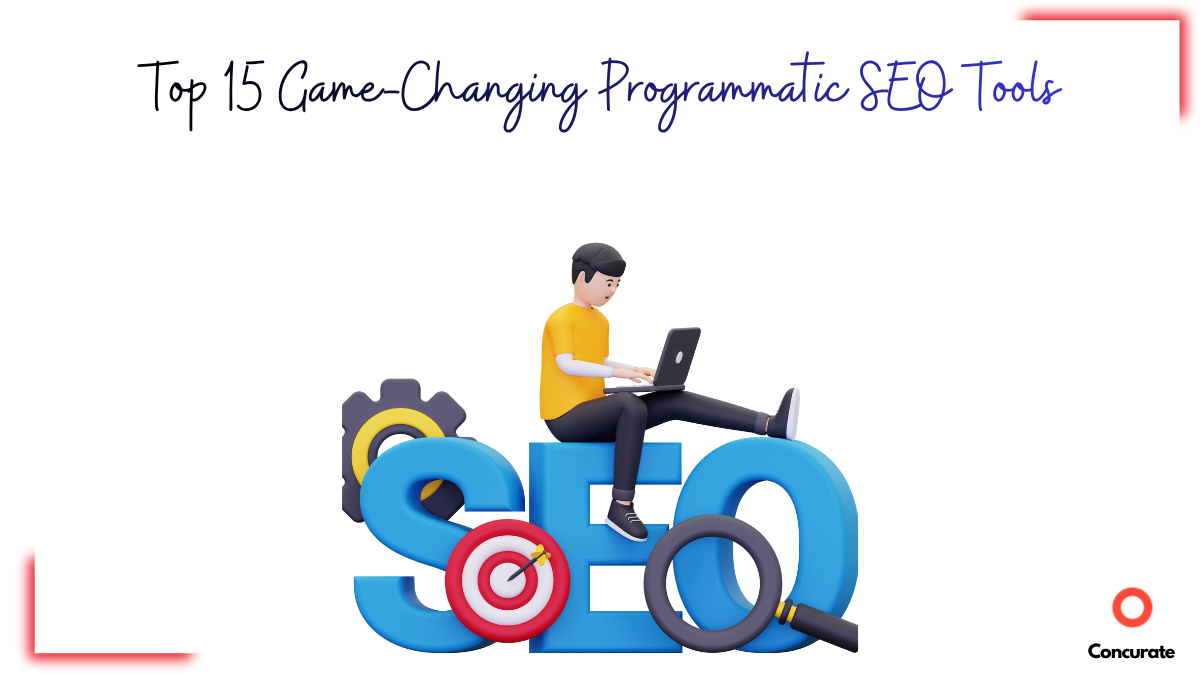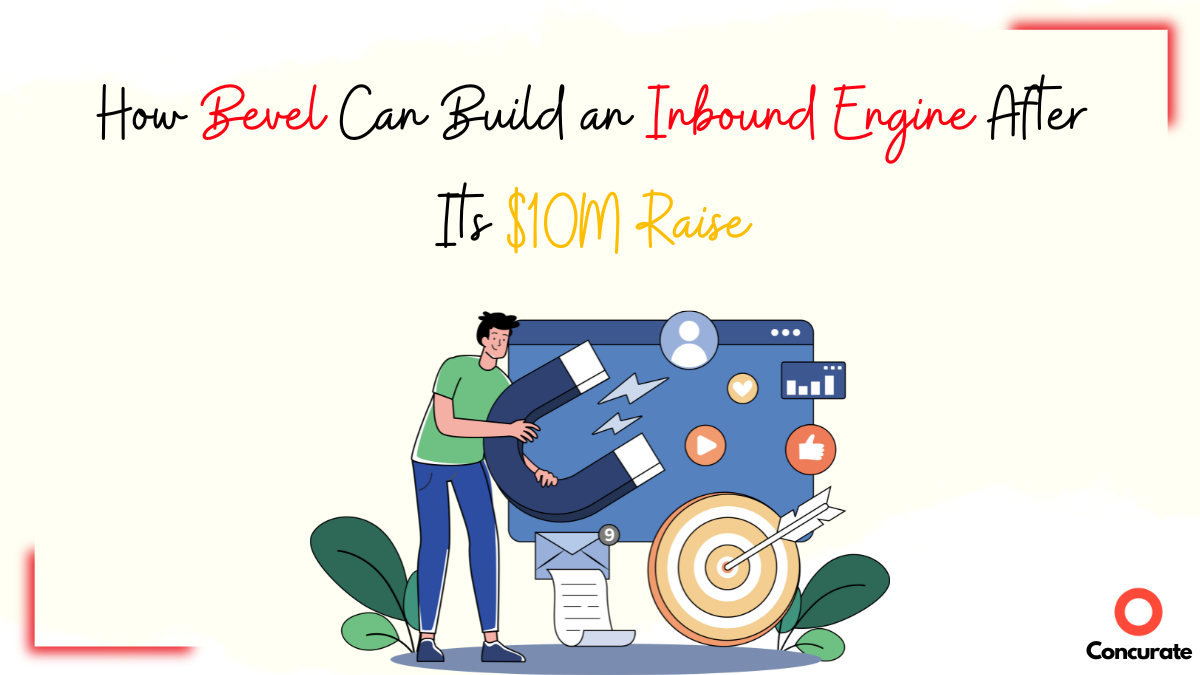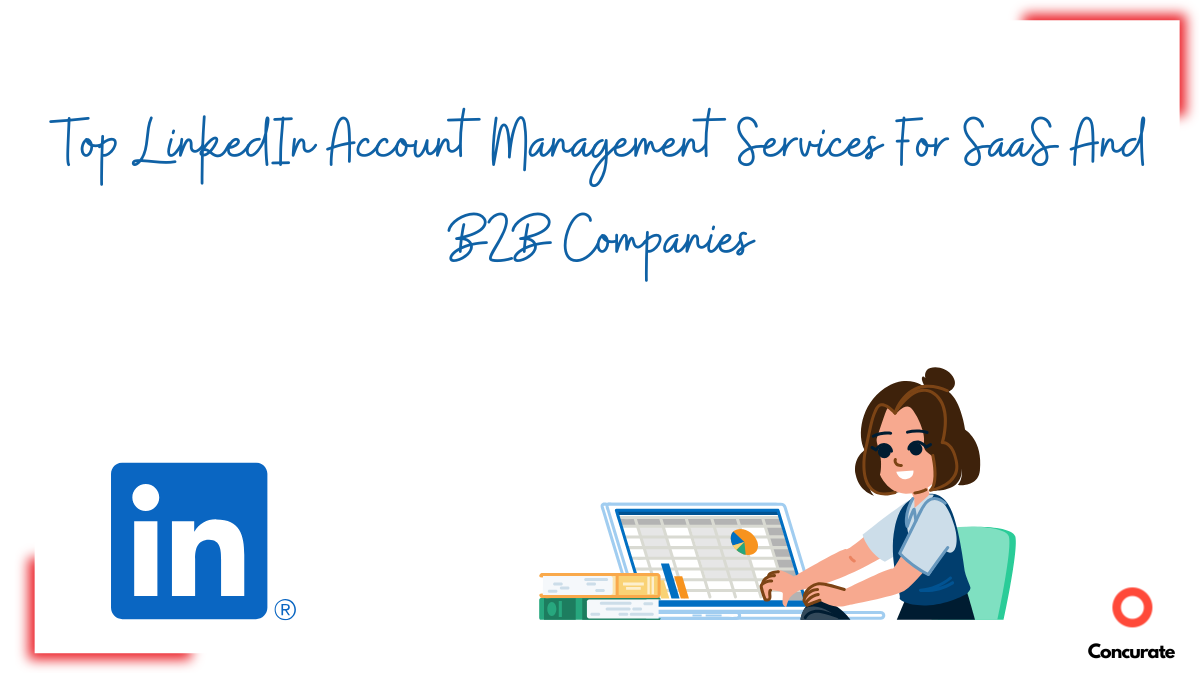Your product automates what used to take teams hours.
You’ve published deep dives on CI/CD, DevOps pipelines, and cloud security. But your blog? It’s almost nothing. Google’s not showing your pages; Red Hat’s are ranking instead.
Whereas, Red Hat is pulling in 1.3 million+ monthly visits by owning high-intent keywords like “Openshift,” “Ansible,” and “What is CI/CD”; long before buyers ever hit a sales call.
This teardown breaks down exactly how Red Hat does it; and how you can learn from them.
Red Hat’s SEO Snapshot: The Numbers That Matter
| Organic Traffic (Monthly) | 1.3M |
| Domain Rating (DR) | 91 |
| Backlinks | 13.6M |
How Red Hat Captures Traffic: Breaking Down the Sources
#1 Branded searches: 634.8K visits (Users already familiar with the brand)
#2 Non-branded searches: 638.5K visits (Capturing users before they know the brand)
#3 Informational searches: 1.2M visits (Users seeking knowledge and insights)
#4 Navigational searches: 212.2K visits (Users looking for a specific website or page)
#5 Commercial searches: 340.3K visits (Users researching before making a purchase)
Traffic MVPs: Top Pages Driving Red Hat’s Success
| Page | Keyword | Position | Monthly Traffic |
| redhat.com/en | red hat | 1 | 74,585 |
| redhat.com/en/technologies/cloud-computing/openshift | openshift | 2 | 49,096 |
| redhat.com/en/ansible-collaborative | ansible | 2 | 43,762 |
| redhat.com/en/topics/api/what-is-a-rest-api | rest api | 3 | 39,784 |
| redhat.com/en/topics/devops/what-is-ci-cd | cicd | 2 | 35,789 |
| redhat.com/en/technologies/linux-platforms/enterprise-linux | red hat linux | 1 | 28,689 |
| redhat.com/de/topics/api/what-are-application-programming-interfaces | api | 1 | 27,380 |
| redhat.com/en/topics/automation/what-is-a-webhook | webhook | 2 | 20,573 |
| redhat.com/en/topics/devops/what-cicd-pipeline | cicd pipeline | 2 | 17,782 |
| redhat.com/es/topics/internet-of-things/what-is-iot | internet de las cosas | 2 | 15,922 |
Red Hat’s Top Pages: Where the Traffic Flows
#1 The homepage dominates, ranking #1 for “Red Hat” and attracting visitors already familiar with the brand.
#2 OpenShift pulls in enterprise users, securing the #2 position for “Openshift” as businesses explore cloud solutions.
#3 Ansible maintains authority, driving significant traffic despite a decline in keyword rankings.
How Red Hat Owns DevOps Intent & Converts Technical Traffic
#1 DevOps learners land on educational content, with the “What is CI/CD” page answering key technical queries.
#2 API-related topics bring in global visitors, as “What is a REST API” and “What is an API” rank for high-volume terms.
#3 Webhook automation captures niche searches, proving Red Hat’s content strategy aligns with practical developer needs.
RedHat’s Profile: How They Build Authority
| Metric | Value |
| Total backlinks | 13.6M |
| Referring Domains | 94K |
| High-Authority Links | Links from Google, Apple, Wikipedia, Microsoft, Amazon |
Insights
#1 A vast backlink network (13.6M total) signals strong industry credibility, with widespread references from authoritative sources.
#2 Their authority is reinforced by a well-structured link-building strategy that includes backlinks from industry giants like Google and Apple.
Red Hat’s Technical Health
Core Web Vitals (Desktop):
Largest Contentful Paint (LCP): 1.6s (Good)
Cumulative Layout Shift (CLS): 0.02 (Excellent)
Interaction to Next Paint (INP): 56ms (Excellent)

Source: PageSpeed Insights
#1 With an LCP of 1.6s, Red Hat ensures users get a smooth experience without delays.
#2 Excellent CLS (0.02) and INP (56ms) indicate a well-optimized site with minimal layout shifts and quick interactions.
Red Hat’s Traffic by Location
| Country | Monthly Visits | % of Total Traffic |
| United States | 319.2K | 25.1% |
| India | 181.3K | 14.2% |
| Japan | 84.4K | 6.6% |
| Brazil | 74.1K | 5.8% |
| Germany | 69K | 5.4% |
Insights
#1 The U.S. remains the primary traffic source, but a decline of 28.6K visits suggests shifting search trends.
#2 India holds a strong second position, indicating a significant global audience beyond North America.
Traffic Breakdown
| Source | Value |
| Organic Search | 1.3M |
| Paid Search | 3.3K |
Paid Ad Keywords That Drive Conversion
Red Hat actively bids on its own name, ensuring dominance in branded searches.
Top Keywords Red Hat Is Bidding On:
#1 “redhat”
#2 “cloud security”
#3 “linux os download”
#4 “rhel9”
#5 “ansible training”
#6 “ai code editor”
#7 “redhat openshift”
Insights
#1 Cloud & automation focus: Keywords like “cloud security” and “ansible training” highlight a push toward enterprise solutions.
#2 Developer appeal: Terms like “AI code editor” and “Linux OS download” show a strategic effort to attract tech professionals.
Red Hat doesn’t just rely on organic search; they’ve mastered multiple SaaS growth strategies to stay ahead in the enterprise tech space.
5 Reasons Red Hat Gets 1M+ Organic Monthly Visits
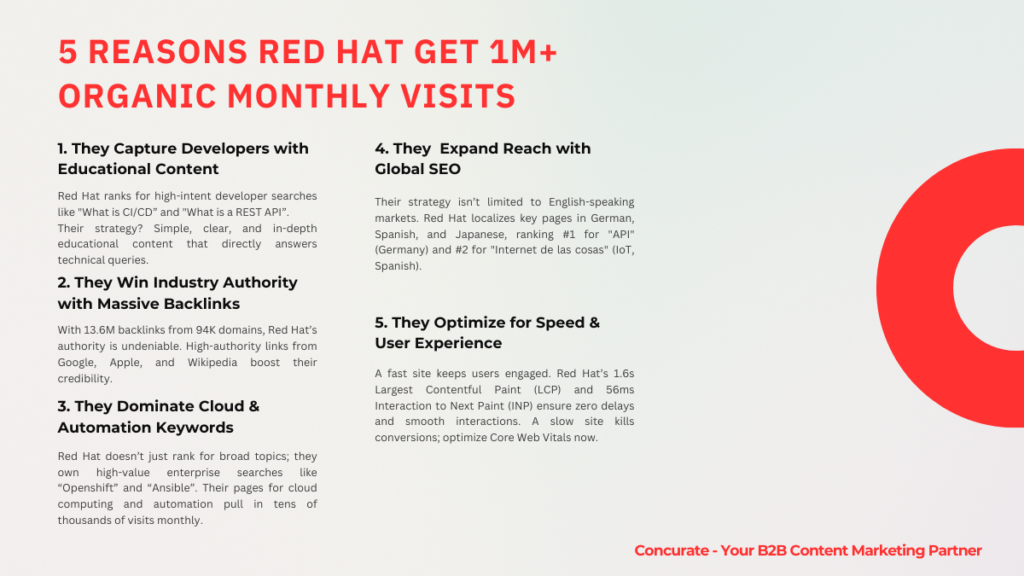
#1 Capture Developer Attention (And Keep It Longer Than 3 Seconds)
Red Hat ranks for high-intent developer searches like “What is CI/CD” and “What is a REST API”.
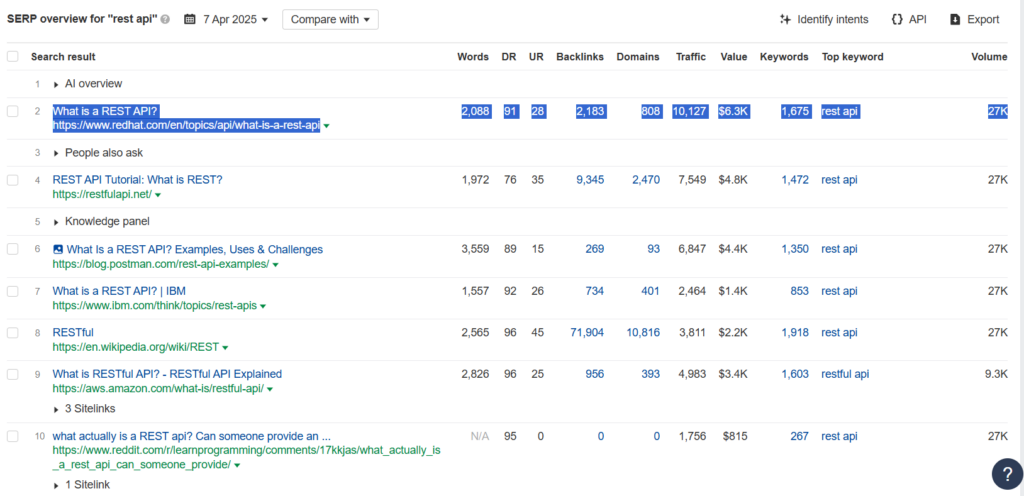
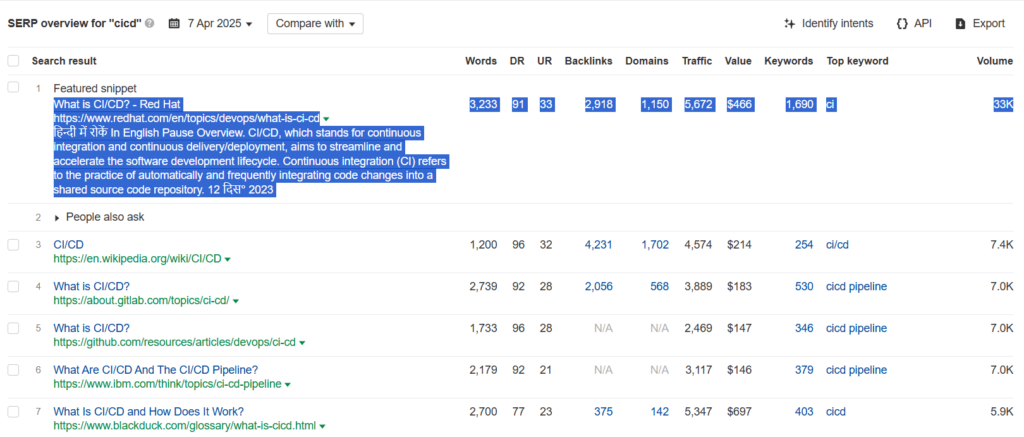
What Red Hat Did Right:
● Created beginner-to-advanced explainers that speak developers’ language
● Structured content using headers, code examples, and diagrams for better clarity
● Aligned their blog strategy with documentation-level depth
SaaS Playbook: Things To Learn
● Audit your existing blog and identify content gaps across key developer workflows
● Create topic clusters around core tech themes (e.g., DevOps, containers, cloud infra)
● Use real code snippets and architecture diagrams to boost credibility
● Build SEO-driven tutorials that double as onboarding content
#2 Earn Backlinks That Make Google Trust You (Like, Instantly)
With 13.6M backlinks from 94K domains, Red Hat’s authority is undeniable. High-authority links from Google, Apple, and Wikipedia boost their credibility.
What Red Hat Did Right:
● Published link-worthy assets like technical whitepapers and industry reports
● Built authority through strategic partnerships with the Linux Foundation and others
● Got consistent mentions in top-tier tech media (TechCrunch, Wired, ZDNet)
SaaS Playbook: Things To Learn
● Create original research reports using your platform’s data (e.g., “2024 DevSecOps Trends”)
● Pitch those reports to journalists and industry blogs for backlinks
● Partner with open-source communities or cloud alliances to co-author content
● Add internal tools (e.g., calculators, benchmarks) that other blogs want to cite
#3 Own the Keywords That Actually Drive Pipeline
Red Hat doesn’t just rank for broad topics; they own high-value enterprise searches like “Openshift” and “Ansible”. Their pages for cloud computing and automation pull in tens of thousands of visits monthly.
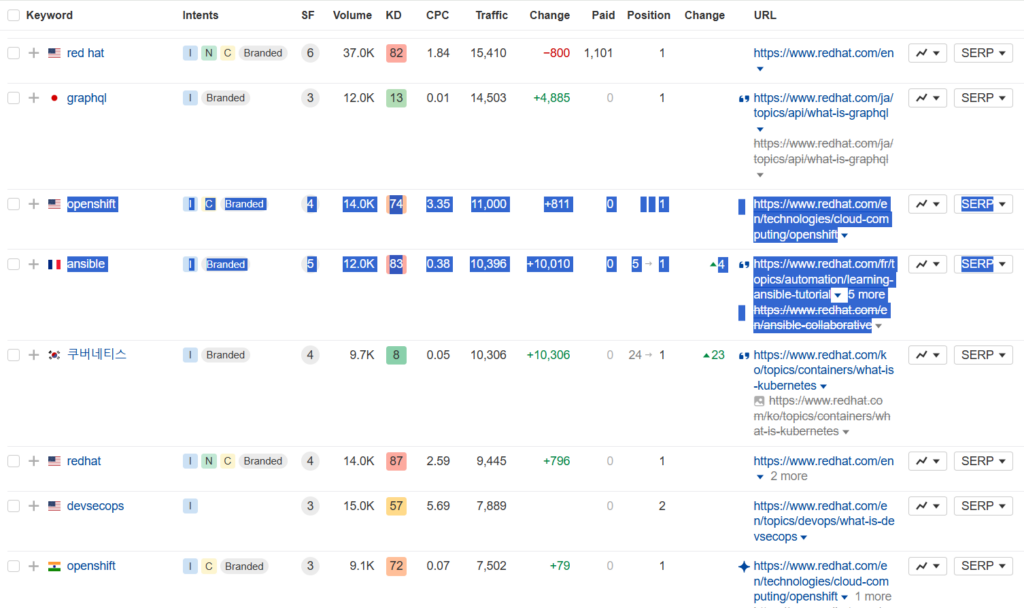
What Red Hat Did Right:
● Built SEO-optimized product pages targeting transactional intent
● Included demos, case studies, and integrations for conversion
● Used schema markup and clean site architecture to win featured snippets
SaaS Playbook: Things To Learn
● Audit your product pages; are they ranking for anything? If not, optimize for keywords like “secure file transfer tool” or “DevOps automation platform”
● Create dedicated pages for each core feature and vertical use case
● Link blog posts, docs, and resources back to these pages to boost authority
● Use schema markup to enhance visibility in SERPs
Example from SaaS:
Datadog’s product pages rank for “log management platform” and “APM tool” and convert visitors with interactive demos and a 14-day trial CTA. Learn from their SEO strategy.
Takeaway: Don’t just create content. Create optimized landing pages that solve buyer intent.
#4 Multiply Your Traffic with One Move: Global SEO
Their strategy isn’t limited to English-speaking markets. Red Hat localizes key pages in German, Spanish, and Japanese, ranking #1 for “API” (Germany).
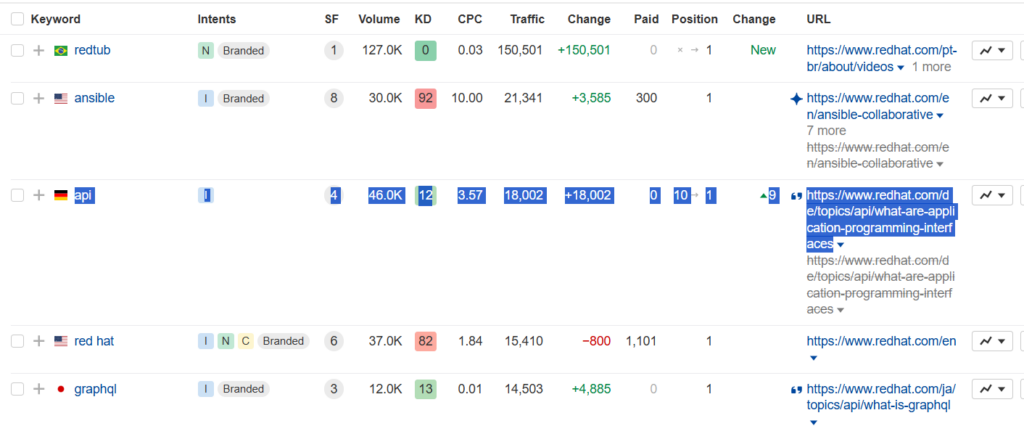
What Red Hat Did Right:
● Translated high-performing English pages into target languages
● Hired native-speaking experts to adapt content for tone and terminology
● Used hreflang tags and country-specific domains/subfolders for SEO precision
SaaS Playbook: Things To Learn
● Identify your highest-performing English blog and product pages
● Localize those pages into your top 2-3 international markets
● Collaborate with local industry experts for cultural fit
● Monitor each market’s keyword trends with tools like Semrush or Ahrefs
Example from SaaS:
HubSpot localizes its Academy courses and blog in 6+ languages. Their Spanish blog alone generates thousands of monthly leads. Learn their content strategy.
Ready to Turn SEO into a Revenue Channel?
At Concurate, we help DevOps, cloud, and B2B SaaS companies build SEO strategies that drive real business outcomes.
We focus on:
- Creating expert-driven content that ranks and earns buyer trust
- Building product-aligned pages that convert searchers into customers
- Structuring and optimizing content for sustained traffic and lead generation
If your SEO efforts are not turning into pipeline, we can help you fix it with a clear, actionable strategy.
Book a SEO teardown. Get 3 custom recommendations you can implement to start capturing high-intent traffic.
Disclaimer:
This article is an independent analysis based on publicly available data regarding Red Hat’s SEO strategy. It is not endorsed by, affiliated with, or sponsored by Red Hat Inc. All trademarks mentioned are the property of their respective owners.



